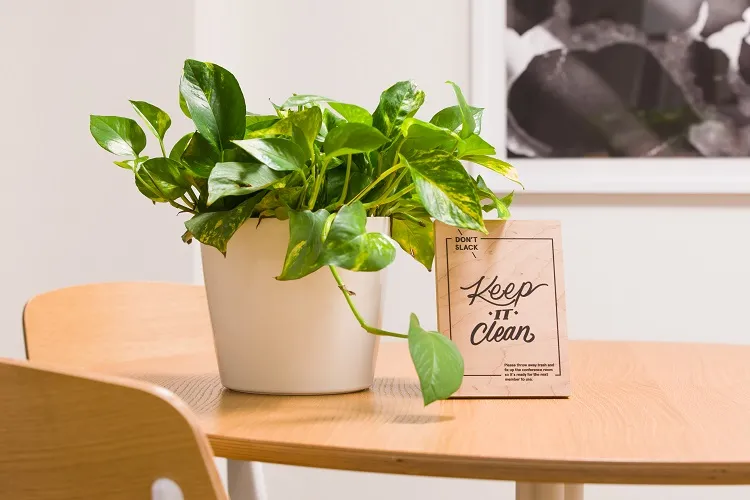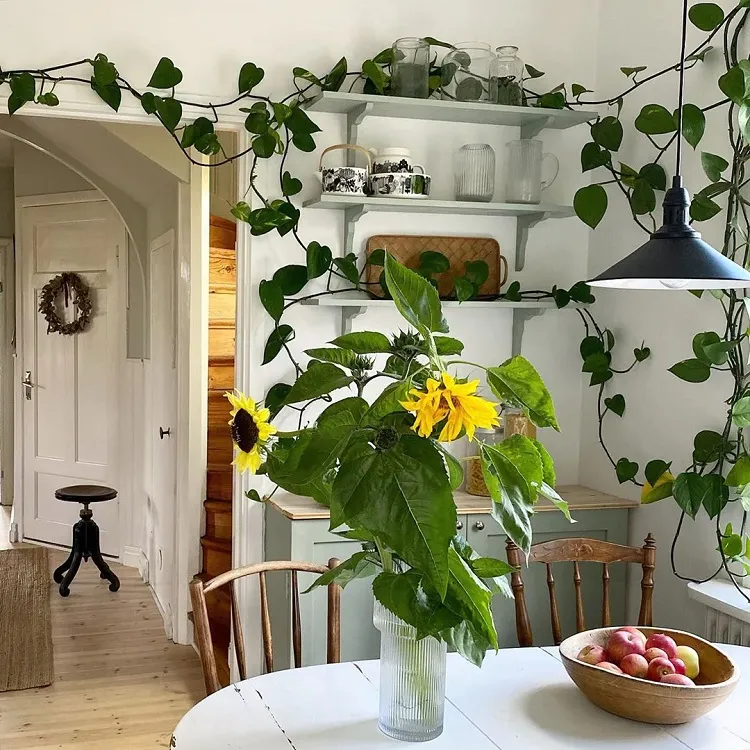Who doesn’t like Devil’s Ivy, with its cascading vines and lush leaves, that fills the living space with joy and vibrant greenery? Though its name is somewhat strange, the truth is that it comes from the unusual ability of the plant to survive in incredible conditions. It’s almost impossible to be destroyed. The vitality of Pothos, its other name, is so high that it stays green and alive even without any light. What’s more, you can actually forget to water it for a long time. These excellent qualities have enhanced its popularity as a houseplant and made it a loved addition to offices. Today, we are going to provide you with some valuable guidelines on propagating and repotting this delightful plant.
What’s the Best Pot for a Devil’s Ivy?

When choosing a pot for your Devil’s Ivy, it’s important to consider a few factors. Firstly, the container should have drainage holes to prevent waterlogging, as this plant doesn’t like much moist in the soil. It’s extremely important to select a pot with a sturdy and stable base, as the plant usually develops long vines that may lead to overturning its pot.
Devil’s Ivy Care Tips

Devil’s Ivy is a relatively easy plant to care for. This makes it a suitable choice for beginners. Here are the important care tips:
- Indirect lighting: The plant thrives in bright light, but avoid exposing it to a full sun, as this can scorch the leaves. The best is to place it near a window.
- Rare watering: Devil’s Ivy prefers not too much moist in the soil. Water it when the top inch of soil feels dry to the touch and provide a good drainage.
- High air humidity: The plant appreciates a humidity environment. Mist the leaves occasionally, or place a tray of water nearby.
- Spring and summer fertilization: Feed your green “pet” with a balanced liquid fertilizer during the two growing seasons.
How to Train Devil’s Ivy to Climb?

One of the most exciting aspects of this plant is its ability to climb and cascade down from shelves or hanging baskets. You should encourage it to do that, installing a trellis, moss pole, or other similar structure in the pot. Then gently wrap the plant’s vines around the supporting device, and use soft ties to secure that the vines are in place, if necessary. Prune any unruly growth to maintain a compact appearance.
Why is My Devil’s Ivy Turning Yellow?

Yellowing leaves on your plant is a sign of some issue. The most common causes are connected with overwatering, insufficient moisture, or inadequate lighting. Therefore, you should evaluate your plant’s watering schedule and adjust it according to the needs. If the leaves are receiving too much direct sunlight, move the plant to a spot with not so bright light. You should also check for pests such as spider mites or mealybugs, known for causing leaf discoloration. Then treat the underlying issue and provide the plant with the needed care.
Devil’s Ivy Repotting

Spring is the best time to repot your plant when it’s actively growing. Repotting is essential, as it allows it to grow and thrive. Here are the guidelines on how to do it:
- Prepare the pot and the soil: Choose a container that is one size larger than the current one. Ensure it has proper drainage holes and fill it with a well-draining potting mix. The best mixture is made with peat moss, perlite, and compost.
- Remove the plant and trim its roots: Gently loosen the soil around the base of the plant and carefully lift it out of the old pot. Trim off any dead or unhealthy roots using clean and sharp pruning shears.
- Perform the repotting: Place the plant in the center of the new pot and add the fresh soil mix around it, ensuring that the roots are adequately covered. Gently press the soil.
- Water and settle: At last, water the plant thoroughly until the liquid drains out of the bottom of the pot. This will settle the soil and eliminate the air pockets around the roots.
Repotting Devil’s Ivy Cuttings

If you want to propagate more plants in a simple way, repot the cuttings into individual pots. You should take your healthy stem cuttings, around 4–6 in (10-15 cm) long, with at least two to three leaves on each one. Then prepare small pots filled with a well-draining soil, the better choice is a mixture of perlite and peat moss, which ensures good aeration. Make a small hole in the potting mix and insert the cutting, leaving the lowest set of leaves above the planting surface. Finally, gently press the soil around the cutting. Place your pots in a warm place with indirect sunlight. Keep the soil consistently moist, while not waterlogged. After a short time, the cuttings will develop roots and new stems, and turn into mature plants.

Read also: How To Grow a Rose Cutting Properly? Check Out The Methods Here!
Enjoy the journey of watching how your Devil’s Ivy thrives, climbs, bringing natural elegance to your home or office.
